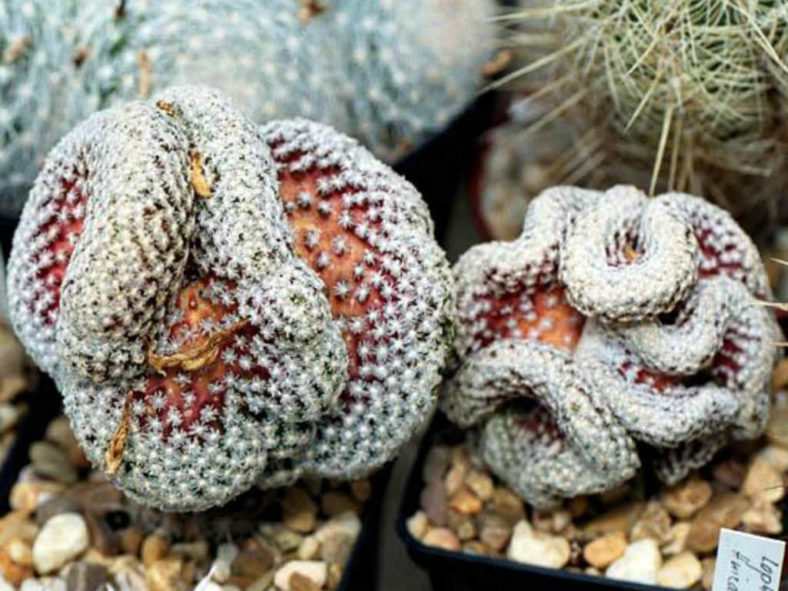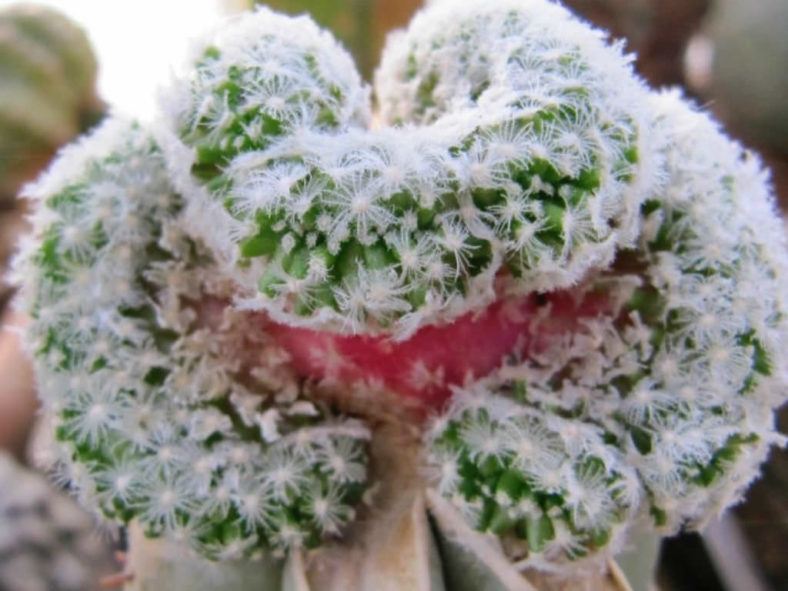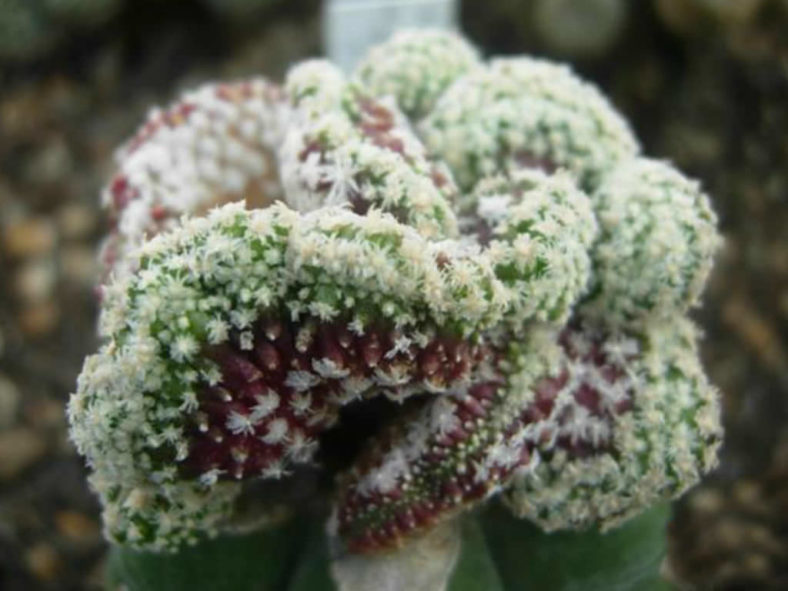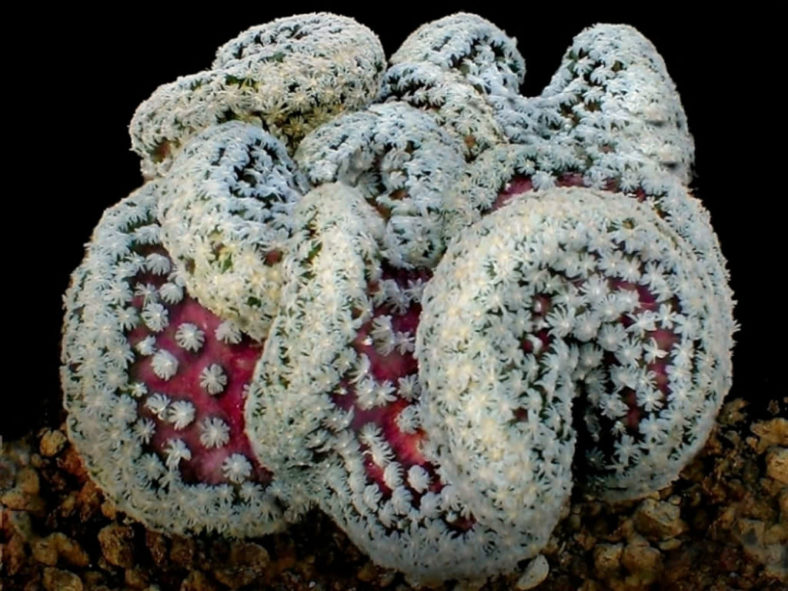Scientific Name
Mammillaria theresae 'Cristata'
Accepted Scientific Name
Mammillaria theresae Cutak
Synonym(s)
Mammillaria theresae f. cristata
Scientific Classification
Family: Cactaceae
Subfamily: Cactoideae
Tribe: Cacteae
Subtribe: Cactinae
Genus: Mammillaria
Description
Mammillaria theresae 'Cristata' is a rare small cactus with contorted olive-green stems with a magenta-red tint and clusters of white to yellowish-white spines. Each areole bears 22 to 30 spines.
The flowers are pink with pale yellow stigmas and can reach up to 2 inches (5 cm) in length and 1.4 inches (3.5 cm) in diameter. They appear mainly in spring but also sporadically throughout the summer.

Hardiness
USDA hardiness zones 10a to 11b: from 30 °F (−1.1 °C) to 50 °F (+10 °C).
How to Grow and Care
To encourage better flowering, allow the plants to enjoy a cooling period in the winter and suspend watering. Unlike many other cacti, which use their ribs as storage devices, Mammillaria feature raised tubercles, from which spines emerge. When you water, the tubercles will expand to allow for increased water storage. The flowers emerge from the axils of these tubercles on the previous year's growth, which accounts for their interesting halo effect. It's imperative that the cactus is not exposed to prolonged dampness and sitting water. Never let your cactus sit in a dish of water. Lastly, make sure to fertilize during the growing season for the best results.
Repot as needed, preferably during the warm season. To repot Mammillaria, ensure the soil is dry before repotting, then gently remove the pot. Knock away the old soil from the roots, making sure to remove any rotted or dead roots in the process. Treat any cuts with a fungicide. Place the plant in its new pot and backfill with potting soil, spreading the roots out as you repot. Leave the plant dry for a week or so, then begin to water lightly to reduce the risk of root rot.
See more at How to Grow and Care for Mammillaria.
Origin
Mammillaria theresae 'Cristata' is a form of Mammillaria theresae selected in cultivation for its mutated growth.
Links
- Back to genus Mammillaria
- Succupedia: Browse succulents by Scientific Name, Common Name, Genus, Family, USDA Hardiness Zone, Origin, or cacti by Genus
Photo Gallery
Click on a photo to see a larger version.


